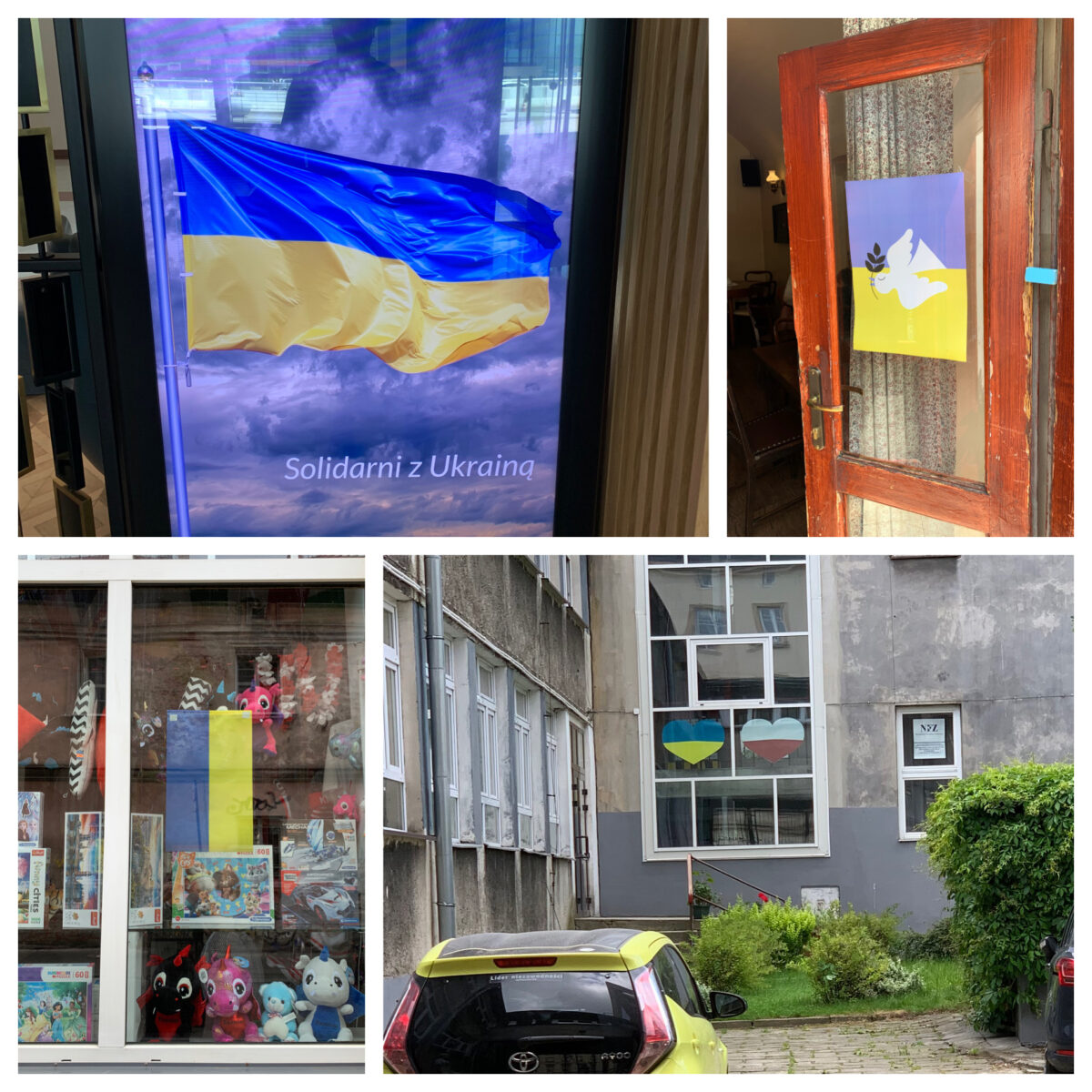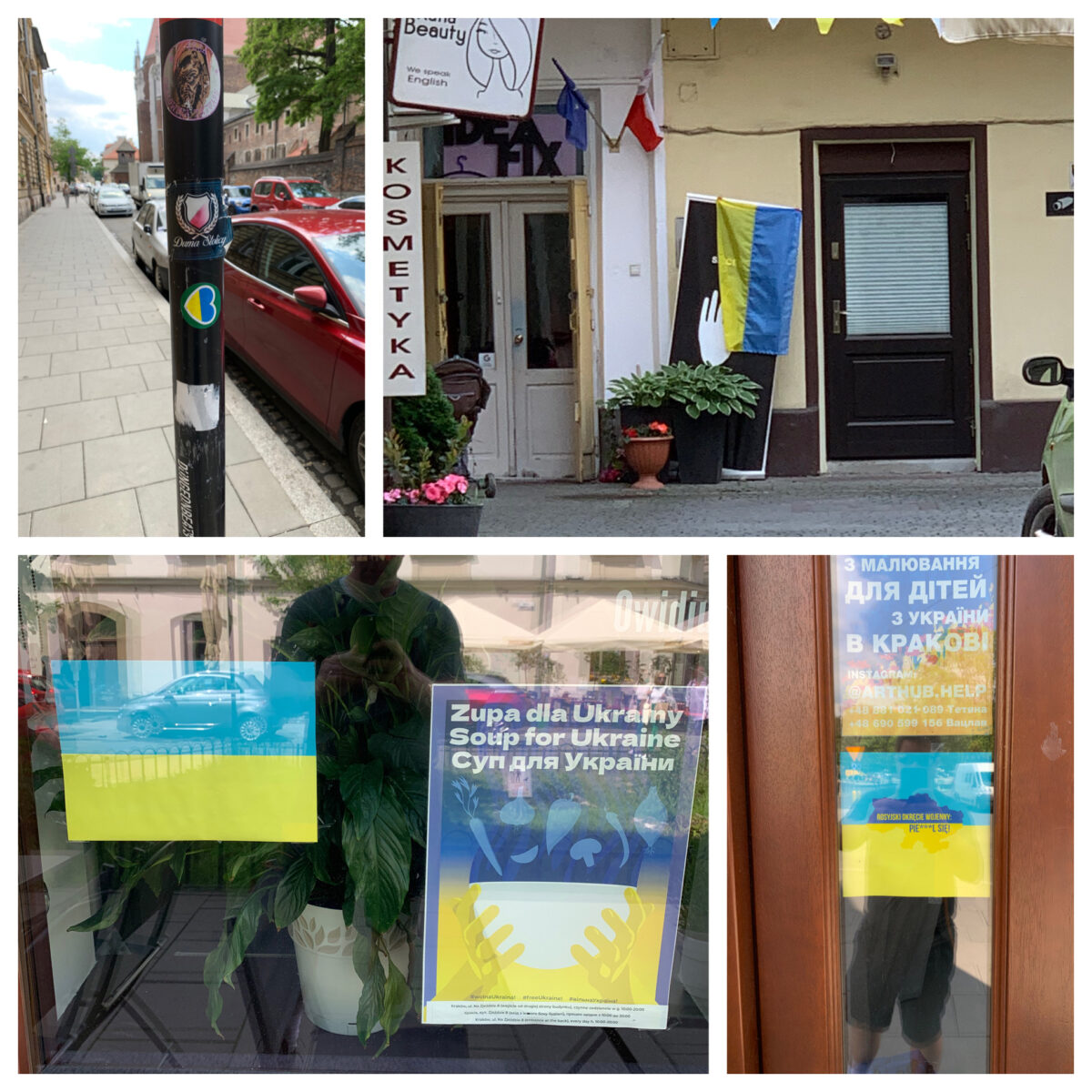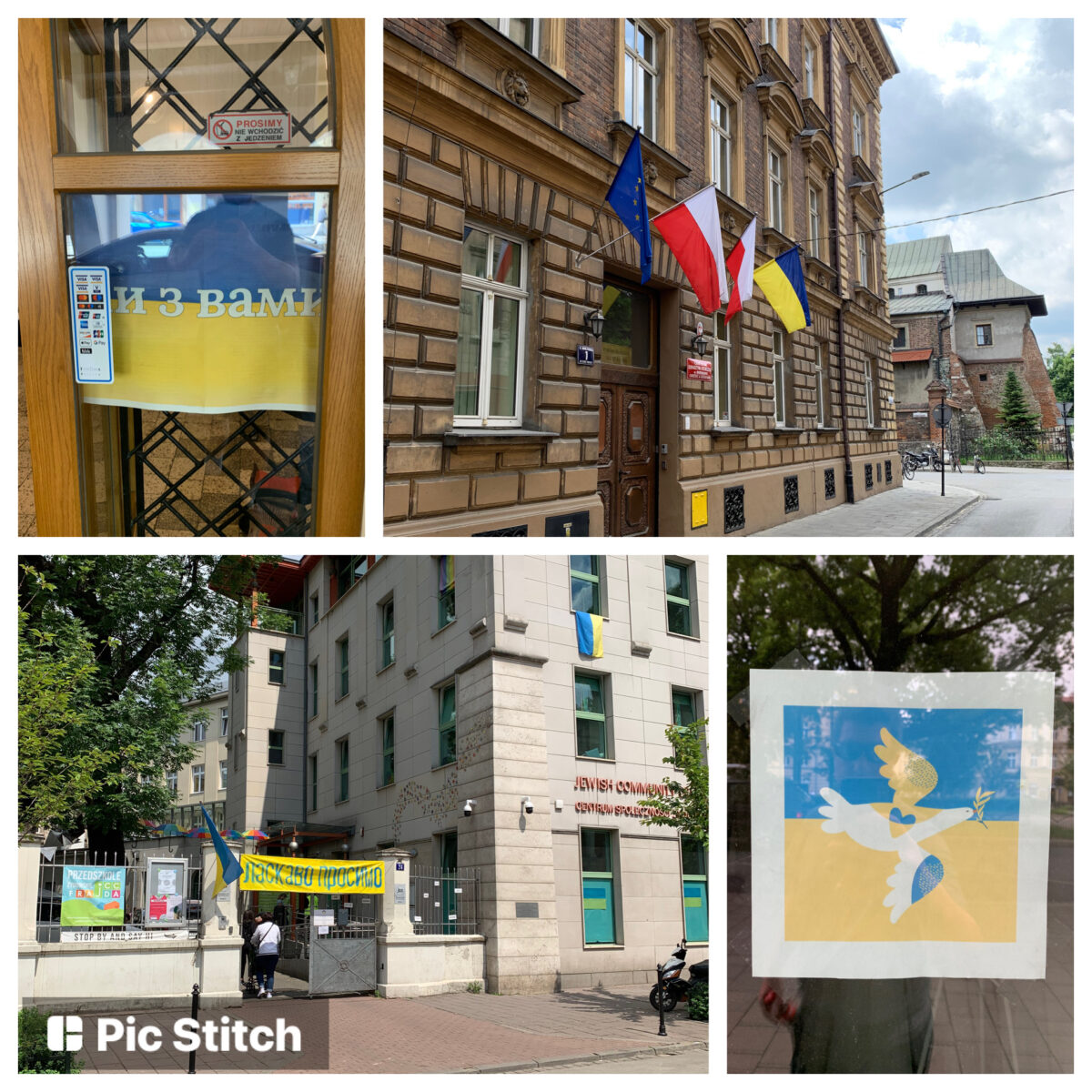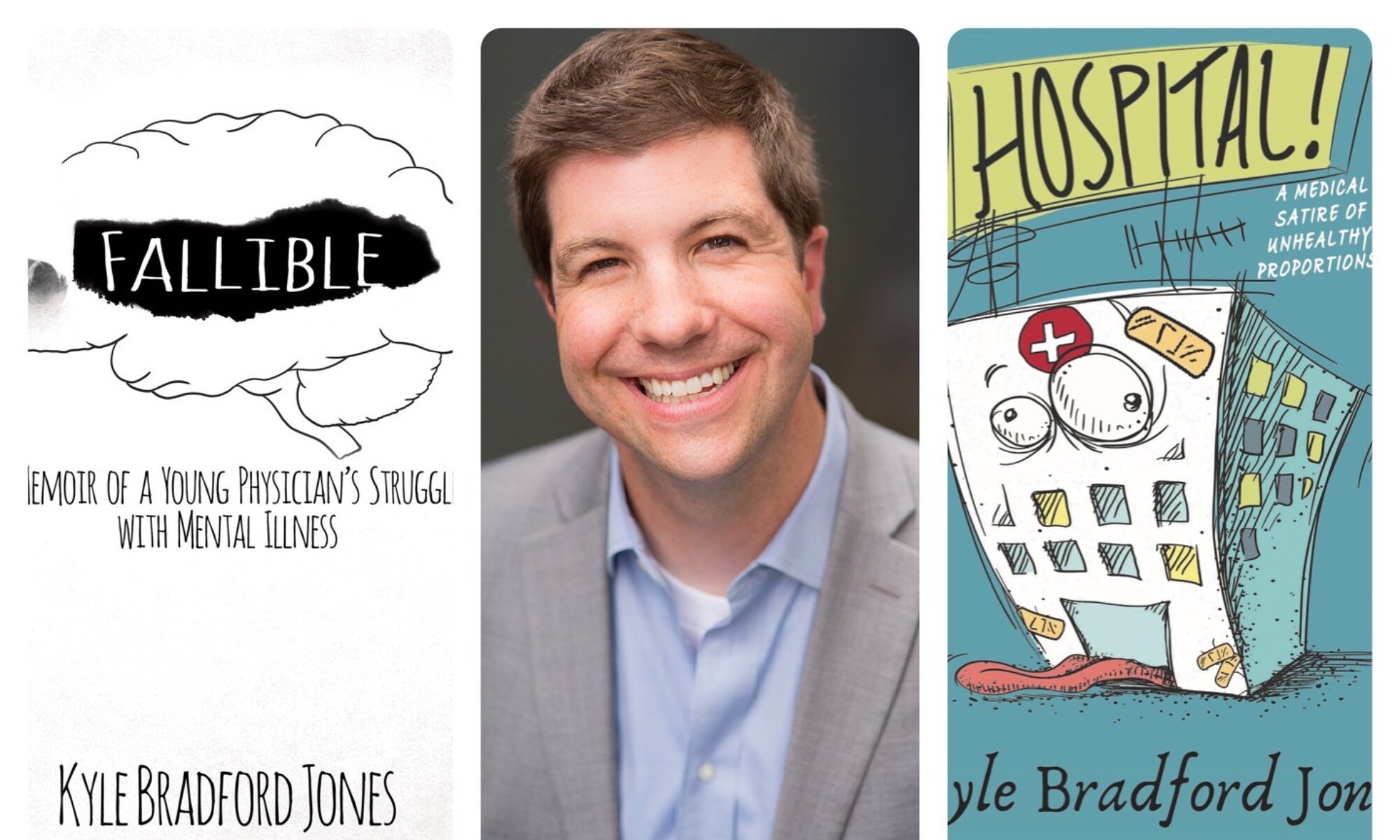This is the second installment discussing my experiences working with Ukrainian refugees in Poland. Go here to see the other entries. More pictures of my particular group can be found here, here, here, here, and here.
On February 23, 2022, very few people in the western world knew what the Ukrainian flag looked like. A request to describe anything about it would be met with blank stares, except for those who envisioned that it may still resemble the flag of the Soviet Union, hammer and sickle over a dark red flag. I dare say that even most Polish people, immediate Ukrainian neighbors to the west, would have no idea. But once Russia invaded Ukraine for no legitimate reason outside of Putin’s selfish maniacal narcissism, millions in the western world immediately recognized the depiction of the blue sky over the fields of golden grain that is the representation of the country that I love.
The flag is now ubiquitous throughout the United States and Poland. (It likely is elsewhere, but I have only been in Utah, Washington, DC, and Poland since the war began, so cannot comment on other areas.) Signs of the flag with supportive text have popped up everywhere.
Seven million Ukrainians have fled the terror of war into other countries, 90% of whom are women and children. Over half of these refugees have gone to Poland. Another eight million Ukrainians have been displaced within the country. Many of them have since gone on to live elsewhere, with multiple European and North American countries opening their borders to refugees, along with others around the world. Two million Ukrainians have returned to their country. (All stats taken from this BBC News story.)
My first week was spent in Warsaw, at a former expo center repurposed into a shelter. While it could theoretically accommodate many thousands of people, there were only around two thousand during my stay. The influx of displaced Ukrainians had slowed down by this point. Many of those who had not already gone to another country were planning to return to Ukraine. I went with the great people at International Medical Relief, a phenomenal group of giving people, most of whom were health care professionals. The group bonded easily and strongly, and I believe that only enhanced our ability to serve the Ukrainian people there.
My second week was supposed to be my own return to Ukraine, but it wasn’t to be. The circumstances surrounding the “mission” in Ukraine changed (as is common in war-torn areas, of course), meaning that I was unable to accompany August Mission into the country. Instead, I went to Krakow to spend the week helping Ukrainians there. It mostly involved assisting in clothing donations and other similar activities, but was much less intense in scope and schedule from the first week.
The Polish people and others around the world are the biggest heroes in this tragedy. I believe in a religion of love, and no one has shown more love and open arms than the Polish people in the last three months. As far as I am concerned, they will go straight to heaven for their kindness. Not only were flags and signs ever-present throughout the country (see collages below), but many everyday signs were changed to include Ukrainian. Places of literal and figurative refuge and material support have popped up everywhere. Children’s books that include stories in both Polish and Ukrainian became common to help children adapt. Miracles happen every day, and the people of Poland are a miracle to the people of Ukraine.
Ukrainians are some of the most resilient people in the world. They have the perfect combination of humility and a F**k You attitude that has led them to defend their country much more effectively than was expected. One of the volunteer translators at the center showed me a picture of his eight-year-old niece in Kiev. She was standing on the charred remains of a burned Russian tank in the middle of the city, flexing her arms with a look of triumph on her face. That is what the Ukrainian flag truly stands for. The world is quickly learning that.




The next entry will include a lot more personal stories from the wonderful people I met.

